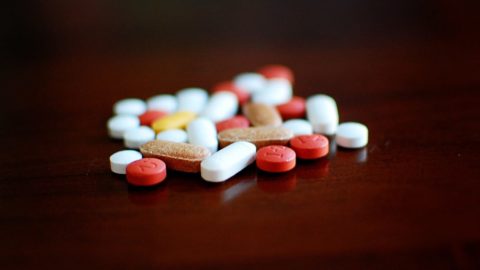Programming Note: Cost Curve is off tomorrow. Back Monday. Of course, that’s what I said last week, too, and look where that got me.
There is a new analysis from Prime Therapeutics making the rounds that suggests that obesity medicines are associated with higher costs after two years of treatment, without a lot of cost offsets. The lack of benefit seems to be driven by the fact that people stop taking the meds.
That’s the topline based on the real-world data presented, and that’s how Prime Therapeutics is framing it. But when you start turning over rocks, it’s not clear if the study has anything to say (other than “treat PBM data with skepticism”).
For starters, we’re looking at a group of patients that went on GLP-1 meds in 2021. That means half of the patients received older, less effective medicines, based on an earlier publication about this cohort. Only about 10% were on Wegovy. None were on Mounjaro or Zepbound. And the one-year data showed that — sure enough — patients tended to stay on the newer medicines longer.
And there’s no clinical data laid over this. Did patients lose weight? Was there a link between weight loss and staying on therapy? Or overall costs?
Prime doesn’t bother asking these questions. They don’t seem to want nuance. They want a headline (and Reuters delivered for them).
None of this is to suggest that the persistence of treatment isn’t important. But I’m not sure that short-term, population-level data on a non-representative mix of meds is the best way to figure out that problem.
There’s lots of assorted PBM news today. This KFF piece is a great companion to last weekend’s NYT deep dive: both articles make clear that independent pharmacies are struggling, and that part of the reason they’re struggling is low reimbursement. None of this is a surprise, necessarily, but the repetition of that reality can’t hurt.
This Biopharma Dive story also caught my eye, because it has a really killer quote in it, from Paul Markovich the CEO of Blue Shield of California: “This business model is a dead man walking.” He was talking about the disconnect between PBMs and employers. To be clear, he’s not saying the PBMs are dead men walking. He’s saying the business model has got to go. It’s probably an open question about whether that happens via revolution or evolution.
But the most interesting PBM bit on my radar this morning is the STAT interview with Mark Cuban. I’m not going to lie: I enjoy Mark Cuban’s gifts as a communicator, but the message track isn’t all that fresh anymore, which is why I haven’t written a ton about his recent media blitz.
I hope that Mark’s message is getting out, but I’m pretty sure that you, dear reader, are already tracking on it.
All that to say: Mark dropped one nugget in with STAT that caught my eye. STAT’s Matt Herper asked Cuban why he just doesn’t negotiate directly with brand-name drugmakers. Here’s where it got interesting: “And the answer is, we would love it. And even the manufacturers that we’ve talked to …. all but one, and I won’t say which, just said, yeah, we’d love it, too.”
Cuban goes on to blame threats from the PBMs for icing that conversation, but the idea that he’s pushing hard on companies to contract with him is pretty fascinating. And, yes, I’d love to know which company is a hard no on the idea …
My assumption is that Kalama Harris’ public drug-pricing platform is a non-starter for a bunch of reasons, and this STAT piece gets at some of the obstacles. (STAT goes heavy on the “it won’t make a difference” argument, but I think the practical obstacles are even more pronounced.)
About 70% of hospitals have a tool that can assess a patient’s drug benefit in real-time, per new JAMA Health Forum research. I know there have been some hospital-level analyses of what this means for actual prescribing, but now I’m curious about what it means on a larger scale. What kinds of subtle changes has this wrought?
The drug pricing universe is so complex that anyone who stops to try to explain one little piece of it in a way that is both simple and nuanced deserves propers. So kudos to KFF for pushing out a piece on copay coupons that is impressive in its effort to strip things down to the basics, without losing resolution.
I’ve written before that I don’t entirely understand the insulin-shortage phenomenon. The anecdotes about patients unable to find the medicines are wrenching and clearly legitimate, but I still haven’t seen a compelling explanation for what’s happening systemically. Are these weird one-offs? Is there something more? USA Today put a few thousand words into the topic today, but I’m not sure I’m any closer to understanding.
Thanks for reading this far. I’m always flattered when folks share all or part of Cost Curve. All I ask is for a mention or tag. Bonus points if you can direct someone to the subscription page.





